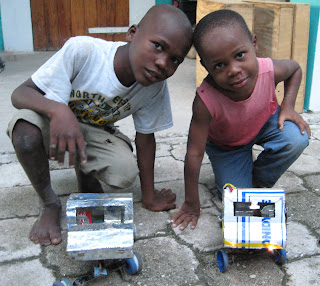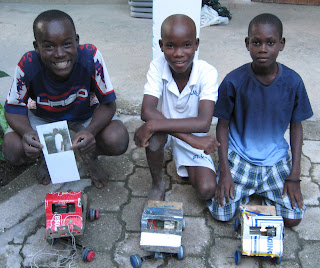Waterborne pathogens are microorganisms (bacteria, parasites etc.) living in water capable of causing human disease such as Schistosomiasis, Hookworm and chronic diarrhea. These diseases are the most prevalent infections of poor people, affecting over one billion people living in developing countries. These people, who lack access to affordable clean water and sanitation systems, are disproportionately affected by the burden of diseases related to water. Many of the disease cases lead to chronic and disabling conditions while nearly half result in the death of the infected individual.
There are several ways in which these pathogens make their way into the human body. Human feces, containing a wide range of bacteria, viruses and other microorganisms, pollute water sources used for drinking and washing. Dead animals and debris are other examples of pollutants posing major problems to drinkable water sources. There are also naturally parasitic waters where bacteria and parasites have survived for billions of years. In many instances, these bacteria play a major role in balancing the ecosystem around them but make the water undrinkable for humans. The problem is not whether or not these pathogens can be destroyed, because almost any water can be made drinkable with the proper filtration system. The difficulty lies in determining an ethical approach to combating these existing inequities among the rich and poor while not compromising the ecosystem and the natural state of the earth. Chlorinating the water for example would make it drinkable for humans but would also kill off all of the parasites in the water, disrupting the ecosystem and possibly leading to the death of all the plants and animals that rely on these naturally occurring bacteria in order to survive.
The statistics are shocking as researchers discover that water supply and access to sanitation is the world’s most lethal and least reported humanitarian disaster. These complex issues bring about many ethical questions that have long gone ignored. Should clean water be proclaimed a human right and made accessible and affordable to all humans? Who’s responsibility is it to secure this right? How would the natural environment be affected positively or negatively from eliminating all water pathogens from the Earth in order to make “clean” drinkable water available to humans.
The anthropocentric view point that proclaims water as a human right, places human beings at the center of development. The essence of a human right is to inform people of their entitlements and empower them to achieve those rights. Thus, it is the human that matters and that must be protected first and foremost. The issue of safe water is central to life and a lack of access to it has a major effect on people’s health. However, an animal rights approach may argue that though most waterborne pathogens have no detrimental effects on the health of animals, matters of pollution and waste lead to the unnecessary death of millions of animals a year. Such perspectives can drastically change depending on how one chooses to view the source of the problem.
The declaration of water as a human right brings with it a responsibility to respect, protect and fulfill the full realization of the right to water. In some instances, this may mean a complete reconstruction of a community, a way of life and a people because of the several factors that play an important role in the access to water including the dynamics of poverty. Whether understood as anthropocentrism or animal rights, it is the responsibility of wealthier and thus more developed nations to take the lead in securing the right to water for all who lack access. 500 children die every day from diarrheal diseases resulting from polluted and parasitic water sources. Families in rural areas of Haiti, plan to have several children knowing that half of them will not survive beyond five years. In many cases, families are forced to go without water in order to keep their livestock alive, but the polluted water only kills the animals faster, often times making the carcasses inedible. This persisting cycle of poverty is an issue of human and animal rights.
To view the issue of unclean water from a gaiacentric point of view forces one to acknowledge the Earth as a whole in its natural state of being. Humans are relatively new on this 3.5 billion year old planet, while bacteria and parasites have been here from the very beginning. Bacteria are an extremely important part of the ecosystem and are responsible for important processes such as decomposition, nitrogen fixing in plants, digestion in animals and the production of essential vitamins. The effects of eliminating these bacteria would be detrimental to the planet and all living creatures. However, waterborne pathogens such as parasites and bacteria are killing millions of humans and animals every year. The same bacteria that keep a particular plant alive can result in a deadly disease if ingested by a child. This is not new information. It is the survival of the fittest and though humans stand at the top of the food chain, deadly disease such a hookworm demonstrates that humans are not the fittest. It all began with bacteria and will all end with bacteria. Through an anthropocentric lens, the health and well being of all humans must be attained in order to secure the existence of mankind. This attainment means guaranteeing access to clean water and proper sanitation systems and killing off any harmful parasites through chlorination, fluorination and water filtration.
Ensuring access to sufficient safe water is crucial in securing the right to health guaranteed to all people by the Universal Declaration of Human Rights. Lack of sanitation systems for fecal matter, the inability to bury dead animals leaving them to decompose in water, poor hygiene, malnutrition and the burdening cost of water are the results of broken infrastructures. Humans are responsible for their own survival. If humans were meant to live harmoniously with nature then there wouldn’t be deadly parasites in water, the one resource that is essential to human life. Keeping in mind that bacteria and parasites play several important roles in regulating numerous environmental factors including plant growth and decomposition and digestion in humans and animals, caution should be taken in determining to what extent the elimination of naturally occurring bacteria and parasites would affect the overall bionetwork of the planet. How do we then decide the value of things? Who determines the value of a life whether it be of a plant, a cow or a child? What does it mean to make water a human right, if in doing so; it requires denying it from other creatures? How do we reach out to communities that believe it is normal to lose half of their children to deadly diseases and that the water gods are responsible? How do we mind personal boundaries and respect the cultures, religions and ways of life of the many world communities. Most importantly, how do we save the 14-16 thousand people, mostly young and elderly, who die every day from avoidable water-related diseases?
As part of the hygiene and sanitation program, the four main public water sources at Vilaj Espwa are tested bimonthly by the PH team for any dangerous bacteria, lead, nitrites and nitrates. We treat our water with chlorine weekly to kill off any dangerous bacteria. This doesn't always kill the parasites, especially when the parasite is spread through fecal matter etc outside the water source. This is why we treat all the children at Espwa with deworming meds on a monthly basis. I am struggling to find funding to extend the treatment to local villages who lack any water treatment. Here are some photos teaching the PH team how to perform a water quality test...

























.jpg)



























